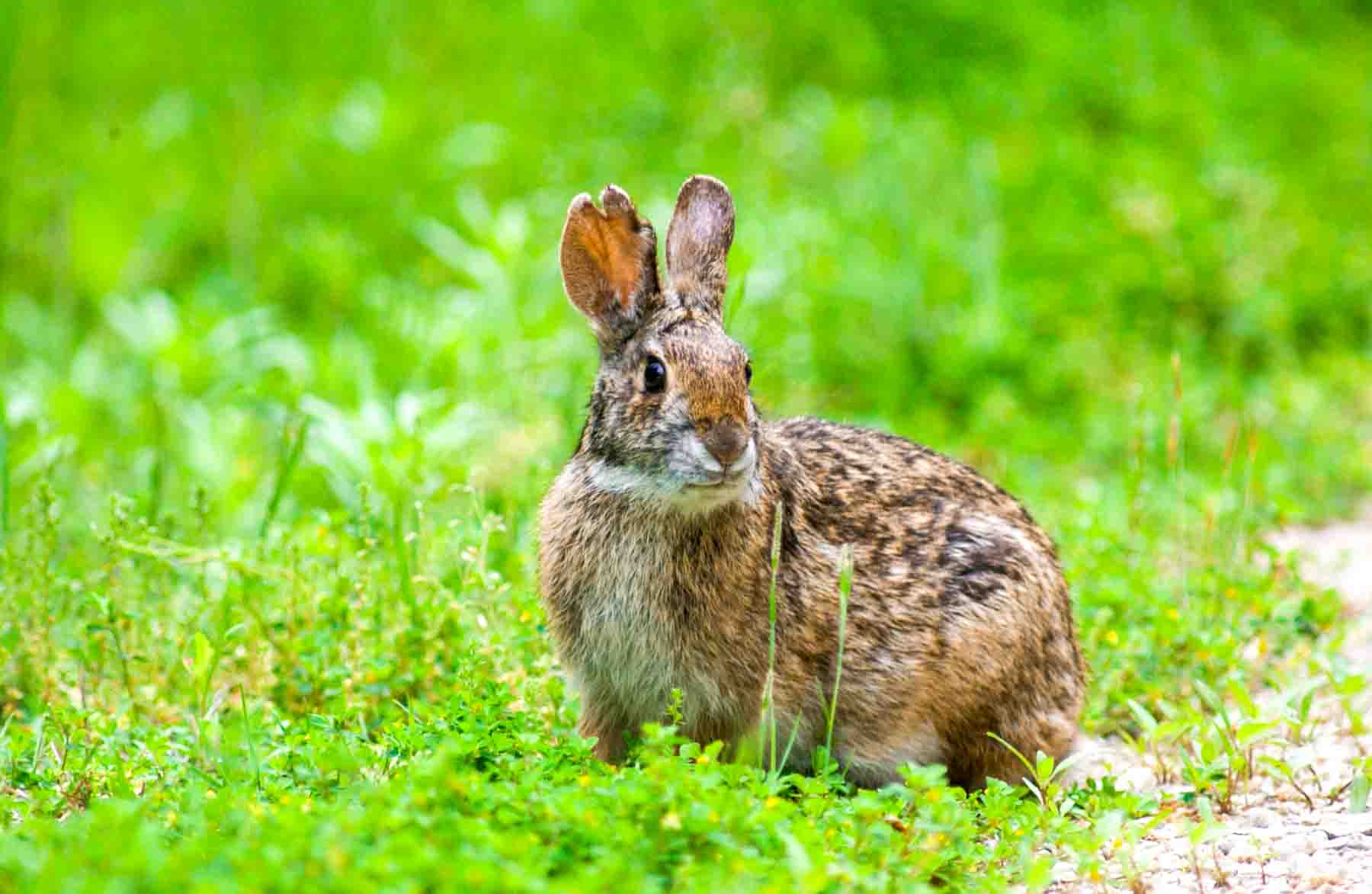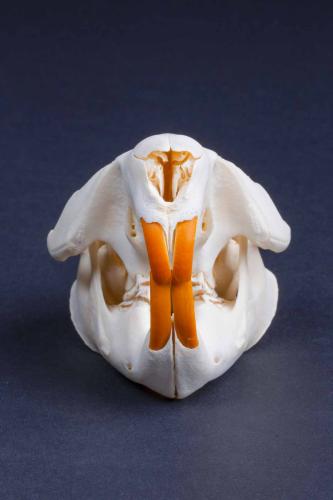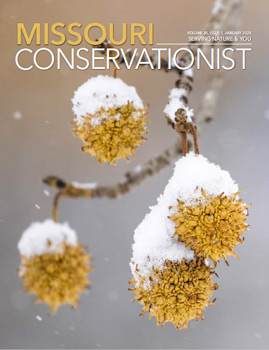Zoo-reared Eastern Hellbender Found with Eggs on Gasconade River
MDC and Partners Reach Another Milestone in the Recovery of Missouri’s Endangered Hellbender
Roughly a year after a zoo-reared Ozark hellbender successfully fathered a clutch of eggs in the wild, an eastern hellbender has followed suit. MDC confirmed the first known case of an eastern hellbender raised at the Saint Louis Zoo to reproduce in the wild.
The news shows MDC’s partnership with the Saint Louis Zoo to recover hellbender populations is creating a bright future for the endangered Ozark and eastern hellbender in Missouri.
“We couldn’t be more thrilled to confirm this news about the eastern hellbender,” said Missouri State Herpetologist Jeff Briggler. “Seeing successful reproduction of zoo-reared animals in the wild has been our ultimate goal and our hope is this event becomes more common.”
In Missouri, the eastern hellbender subspecies occurs in the northern Ozark highlands in spring-fed rivers. Missouri is the only place in the world where both the eastern and Ozark hellbender are found. Both subspecies are listed as endangered by the State of Missouri and the U.S. Fish and Wildlife Service.
Primary threats facing hellbenders are habitat alteration and degradation, over-collecting, disease, predation, and degraded water quality. Hellbenders are long-lived (with a 30-year lifespan), slow-to-mature amphibians that seldom venture far within the river.
MDC partnered with the Saint Louis Zoo Wild Care Institute Ron and Karen Goellner Center for Hellbender Conservation and other agencies in the early 2000s to breed hellbenders in human care and rear eggs collected from the wild to reverse population declines. Once the zoo-bred larvae reached between 3–8 years old, they are released in their native Ozark aquatic ecosystem. Biologists began releasing a few zoo-reared hellbenders in Missouri in 2008, later increasing the number of released animals to 1,000 or more per year beginning in 2012. Since the conception of the breeding and raising of this animal in human care, more than 12,000 Ozark and eastern hellbenders reared at the Saint Louis Zoo and MDC hatchery have been released into their native rivers.
This released, male eastern hellbender originated from the collection of eggs in the fall of 2015 on the Gasconade River by MDC, then transported to the Saint Louis Zoo where the eggs were hatched and reared.
“Rarely are hellbender nests found on the Gasconade River,” noted Briggler. “Therefore, it was a pleasant surprise to even find a nest, but an overwhelming surprise to learn the father was a released animal.”
This male was released into the Gasconade River in June 2018. At the time of his release, he weighed 3.3 ounces (93 grams) and measured 9.3 inches (23.5 cm). At the time he was found guarding a nest in September 2023, he weighed 11.5 ounces (326 grams) and measured 14.7 inches (37.4 cm) in length.
“It’s always exciting to know the history and health of an animal after its release,” said Briggler.
The 8-year-old animal was a father to a clutch of 86 eggs. Upon a nest check in early October, all of the eggs had well-developed embryos with prominent head and tail buds.
The news comes roughly a year after an Ozark hellbender fathered a clutch of eggs on the Current River.
To learn more about hellbenders, visit MDC’s online Field Guide at short.mdc.mo.gov/4M9.
Give a Gift Back to Nature
MDC’s forestry staff reminds you to not throw that cut Christmas tree into the trash after the holidays. Recycle it! Many communities have a Christmas tree recycling program. If not, there are several creative ways to make further use of your tree.
Place the tree in your backyard to offer cover for wildlife or under bird feeders to provide nesting locations in the branches. Add some post-holiday treats as ornaments by coating pinecones with peanut butter and adding birdseed.
Have your tree shredded or chipped for mulch or place cut branches over dormant plants to provide a bit of insulation during the winter and to add organic matter as the needles fall.
You can also sink the tree in a pond, providing fish a place to rest, nest, and escape predators. Multiple live trees make the best cover, so work with friends, family, and neighbors to combine efforts. Anchor the trees with concrete blocks and sink them at a depth of about 8 feet with the trees placed in a row.
If you used a balled live evergreen and your ground is still soft enough to dig, add it to your home landscape for years of enjoyment and wildlife cover.
Buy Your 2024 Hunting and Fishing Permits
MDC reminds Missouri hunters and anglers that related annual permits expire at the end of February, including 2023 permits for small game, fishing, trout fishing, and combination hunting and fishing.
Buy Missouri hunting and fishing permits from one of many vendors around the state, online at mdc.mo.gov/buypermits, or through MDC’s free mobile apps, MO Hunting and MO Fishing, available for download through Google Play for Android devices or the App Store for Apple devices.
Save time by buying hunting and fishing permits for multiple people in a single transaction. Select the Additional Customer option during the permit purchase.
Commercial and lifetime permits can be purchased only through the MDC Permit Services Unit by calling 573-522-0107 for an application.
MDC Sets 2024–2025 Deer and Turkey Hunting Seasons
2024 Spring and Fall Turkey Season
- Spring Youth Portion: April 6–7
- Regular Spring Turkey Season: April 15–May 5
- Fall Firearms Turkey Season: Oct. 1–31
2024–2025 Archery Deer and Turkey Season
- Sept. 15–Nov. 15 and Nov. 27–Jan. 15, 2025
2024–2025 Firearms Deer Season
- Firearms Early Antlerless Portion: Oct. 11–13 (in open counties)
- Firearms Early Youth Portion: Nov. 2–3
- Firearms November Portion: Nov. 16–26
- Firearms CWD Portion: Nov. 27–Dec. 1 (in open counties)
- Firearms Late Youth Portion: Nov. 29–Dec. 1
- Firearms Late Antlerless Portion: Dec. 7–15 (in open counties)
- Firearms Alternative Methods Portion: Dec. 28–Jan. 7, 2025
Detailed information on the upcoming seasons and portions will be included in the MDC 2024 Spring Turkey Hunting and Regulations booklet and the MDC 2024 Fall Deer & Turkey Regulations and Information booklet, available closer to the seasons. The booklets will be available where permits are sold and online at mdc.mo.gov.
Apply Online for MDC Managed Spring Turkey Hunts
Missouri youth, archery, and firearms turkey hunters can apply online for 2024 managed spring turkey hunts during February at mdc.mo.gov/springturkeyhunts. Managed hunt details and application procedures are outlined on the webpage. Drawing results will be posted starting March 15.
Spring turkey hunting youth weekend will be April 6–7 with the regular spring season running April 15 through May 5.
Detailed information on spring turkey hunting will be available in MDC’s 2024 Spring Turkey Hunting Regulations and Information booklet, available where permits are sold beginning in March. Learn more about turkey hunting in Missouri at short.mdc.mo.gov/Ztu.
Lt. Jason Braunecker
Conservation Agent for Gentry, Worth, Harrison, Daviess, DeKalb, Caldwell, Clinton, and Ray counties
Winter presents unique outdoor adventures, like ice fishing. To take advantage of this opportunity, keep some important safety measures in mind. Check each day to ensure there is at least 4 inches of clear solid ice. To do this, go out on a dock and drill a hole with an ice auger. Always go out with another person, pack a throw bag, ice picks, and put grips on your shoes to prevent falls. Be sure to have your permit on waters of the state and fishing supplies, including poles, a dipper to remove floating ice, and live bait or jigs. Sleds are great for packing supplies, and blinds are often used to help stay warm. Have fun and don’t find yourself on thin ice!
Swamp Rabbit
by Shelby Timm

Swamp rabbits (Sylvilagus aquaticus) are the largest member of the cottontail genus, which includes the more common eastern cottontail. Swamp rabbits are found only in areas with bottomland hardwood forests, which are restricted to southeast Missouri. There are three main populations in Missouri: Coon Island Conservation Area (CA), the Mingo National Wildlife Refuge and Duck Creek CA, and Donaldson Point CA.
Why It’s Imperiled
Like so many of the imperiled species in our state, swamp rabbit populations have declined due to habitat loss, largely through conversion to agriculture. Outside of public land, much of the remaining bottomland hardwood forests within Missouri persists in small, isolated patches.
Southeast Missouri is the northern edge of swamp rabbits’ geographic range. Populations at range edges often experience more stress than populations within the core of the range. Populations appear to be more secure in the southern states.
MDC Restoration Efforts
MDC private lands biologists in southeast Missouri identify parcels with high conservation potential and help connect landowners with federal programs to restore native bottomland habitat. These restoration efforts often consider swamp rabbit habitat connections. MDC, in cooperation with university researchers, systematically monitors swamp rabbit presence in habitat patches every 10 years.
What Can You Do?
Protect remaining habitat, wetlands, and riparian corridors on your property. There are options available to landowners interested in protecting and restoring habitats via Farm Bill programs and other cost share or grant programs.
Questions regarding these programs can be directed to the private lands conservationist in your county or at local USDA Service Centers.




American Beaver’s Incisors
The American beaver, a large rodent associated with waterways and wetlands, has long incisors that continuously grow throughout their lifetime. Through daily use and a consistent diet of woody vegetation — including trees and vines ranging from willows and cottonwoods to oaks, hickories, sycamores, and wild grapevines — their incisors stay trimmed. An iron-rich protective coating of enamel causes the teeth to turn orange.
Also In This Issue

Serving Nature and You: Fiscal Year 2023.
And More...
This Issue's Staff
Editor - Angie Daly Morfeld
Associate Editor - Larry Archer
Photography Editor - Cliff White
Staff Writer - Kristie Hilgedick
Staff Writer - Joe Jerek
Staff Writer – Dianne Van Dien
Designer - Shawn Carey
Designer - Marci Porter
Photographer - Noppadol Paothong
Photographer - David Stonner
Circulation – Marcia Hale






















